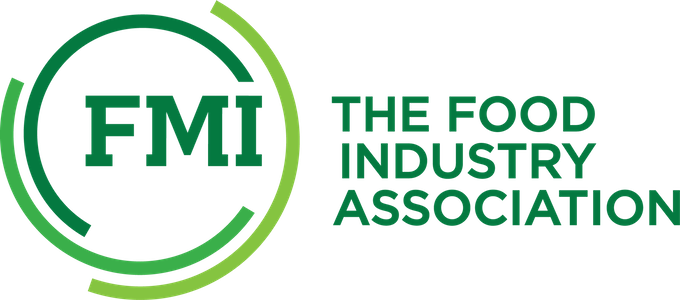From supermarket aisles to global shipping routes, COVID-19 has sent shock waves of disruption through global supply chains. Even as the world cautiously emerges from lockdown, the pandemic will continue to cause supply chain uncertainty and volatility for many months ahead. New outbreaks and the potential for more suspensions of economic activity still threaten the global supply and demand balance in various geographies and industries — each of which will experience their own set of challenges as they try to recover.
The ability of companies to recover will hinge on how well they understand and address key supply chain risks, such as a potential second wave of COVID-19 hitting China or the possibility that India’s current burgeoning outbreak will prompt a new lockdown. Either would upend most supply chains at supplier and sub-supplier levels.
Several burning considerations are top of mind for supply chain leaders at the moment. Key among them is dealing with the frequent lack of supply chain transparency, leaving companies uncertain about the ability of various partners to handle potential problems. Questions often asked by companies: Do we need to step in and help suppliers prepare mitigation plans? How should we adjust our logistical flow for recovery? And finally, how can we make sure we have the full support of our operations relaunch plans?
Conventional techniques will get companies so far, but companies must be prepared to adapt, evolve, and if necessary, reinvent how they manage supply chains if they are to cope with rapidly shifting conditions. The upside here is that organizations that manage to put in place the right teams, tools, and practices could create a competitive advantage for themselves.
Now more than ever, the ability to rise above problems and rivals is based on honing three vital skills: understanding and anticipating disruptions, making rapid decisions, and then following through with decisive actions.
Now more than ever, the ability to rise above problems and rivals is based on honing three vital skills: understanding and anticipating disruptions, making rapid decisions, and then following through with decisive actions. And the tool that allows companies to do this is a control tower SWAT team to oversee data and developments from the supply chain.
How control tower SWAT teams work
Essential tools to enhance those capabilities are dedicated, cross-functional control tower SWAT teams, which increase corporate control and agility during relaunch., SWAT teams should be made up of key individuals from purchasing, logistics, engineering and planning, as all these disciplines are pivotal with their expertise and build a comprehensive network of bridge into the organization. As the airline metaphor suggests, the control tower’s purpose is to provide end-to-end visibility and real-time information of all supply chain activity across the entire networked ecosystem to enable rapid decision-making.
Their primary task would be to identify and evaluate the situation when a supply chain risk intensifies, or an incident arises. To do this effectively, the teams must be tasked with overseeing supplier activities from their ability to deliver, to signs of potential financial distress along the supply chain. This will offer firms better clarity and a more dynamic process to anticipate, monitor, and mitigate supply chain problems, even if the issues appear completely unexpectedly.
These teams should regroup daily to consolidate and analyze information about supplier panel resilience. Important data and trends must then be communicated up the management chain by way of dashboards and summaries of risks and requests. Once issues and respective solutions are identified, these can be transferred to the rest of the organization to take action.
Exhibit 1: Control Tower process for relaunching supply chains

Anticipate disruptions
In times of crisis, transparency is key. Supply chain leaders must think critically about which factors are likely to disrupt supply chains, and plan for the unexpected. One way to do this is by conducting surveys and interviews with suppliers, distributors, and logistics providers to assemble information. From data on orders and capacity, to detailed inventory information (such as total finished goods), obtaining regular and consistent supplier data and updates will better help companies anticipate where problems will arise next.
Tools, such as Oliver Wyman’s COVID-19 Pandemic Navigator, can help companies track and forecast the progress of the pandemic, as well as model impacts on programs, production, and end-customer demand. Having a broad and agile system of sensors will provide early indications on the supply chain’s health, and importantly, allow leaders to make fast, data-driven decisions.
Experience shows that building supply chain predictive capabilities can result in improved delivery. Take the case of a leading aerospace original equipment manufacturer (OEM) that was plagued by inconsistent material delivery and regularly faced availability issues with parts. By implementing a control tower focused on enhancing inbound data visibility and analytics, the company was able to anticipate potential supply chain failure points, letting them react quickly by adjusting orders and prioritizing workloads. The upside included a 30 percent material lead time improvement and a 35 percent reduction in time on the ground for aircraft.
Making rapid, informed decisions
When disruption arises, the ability of supply chain leaders to make quick and effective choices can have a great impact on continuity. Risk dashboards offer data-driven insights and the ability to quickly communicate changing conditions. These should be reviewed daily, with teams proactively challenging the status. Companies should strike the right balance between processes and governance to ensure that they have the agility and flexibility to make decisions rapidly. It is also important to empower decision makers and ensure there is a clear communication process and buy-in from executive leadership teams. This is particularly significant in global organizations, where delegating decisions requires a clear understanding of roles and responsibilities.
It is extremely difficult to anticipate what the world will look like post lockdown, so making clear decisions is now more important than ever. We’ve seen many cases pre-pandemic where problems can be addressed by removing the bottlenecks in decision making. One example is a train rolling stock manufacturer that was hampered by inefficient operations. Missing supplies meant they often had to change their plans and repeat work. This resulted in high penalties from end customers for not delivering on-time, in-full. They superimposed control tower oversight and established a backorder SWAT team. This created a structure for rapid decision making and systemic issue mitigation, including regular round tables, consistent tracking of actions, and dedicated cross-functional root cause analysis teams. By tackling the gridlock, they were able to reduce their backlog by 68 percent in less than three months.
What’s needed to act
Having the right toolkit in place means decisions can be implemented efficiently. Toolkits should address supply chain roadblocks and facilitate the acceleration or deceleration of the inflow of different parts in real-time to address production needs. They should also help suppliers reduce risks, for example through reverse factoring, quality improvement, inventory review and reprioritization, and tools or equipment transfer.
As part of risk mitigation, companies should regularly reassess the supply chain footprint — securing alternative sources for critical parts and services and evaluating long-term changes in supplier composition and location. This may also require redesigning or retrofitting components, refocusing plants, or using alternative production locations.
To enable the continuous control tower process, companies should apply a set of tools and practices to measure, monitor, and track how well SWAT teams are performing. Here, firms could look at factors, such as supply chain readiness and performance dashboards, company liquidity and the impact of cash-saving measures, and continuous risk monitoring.
Beyond the lockdown
Volatility is likely to have a huge impact on supply chains, as we move into a long and arduous relaunch period. Firms that take the time now to invest in the right teams, tools, and practices are likely to be better set up to protect and stabilize their supply chains when disruption occurs. A control tower not only gives firms the ability to move quickly to address immediate issues but will become the oversight function that allows companies to survive the downturn and secure a stable future post-pandemic.





